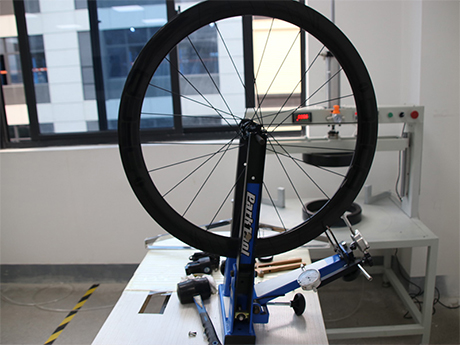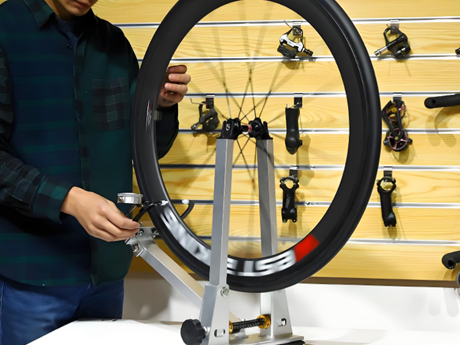Wheel balance is an important aspect of cycling that affects the overall performance, comfort, and safety of the ride.When a wheel is out of balance you can experience a violent shake at high speed referred to as a “speed wobble” or “death wobble.” Wheel imbalance also reduces stability, wastes watts, and potentially leads to premature wear of components such as tires and bearings.
The reasons of bicycle wheels imbalance
Your bike wheels go out of balance due to these reasons:
the weight is not evenly distributed around the wheel, it can result in an imbalance. This is most often caused by a long valve stem or tubeless valve in a deep carbon wheel.Imperfections in the tire, such as bulges or uneven tread wear, can cause imbalance.
Balancing a bicycle wheel ensures smoother rides, reduces vibrations, and prolongs bearing life. Here's a step-by-step guide:
Tools Needed:
Wheel truing stand (optional - can use bike frame)
Zip ties or spoke reflectors (as markers)
Small weights (fishing weights, adhesive wheel weights, or clay)
Spoke wrench (if adjusting tension)
Method 1: Static Balancing (Simplest)
1.Mount the Wheel:
Secure wheel in truing stand or bike frame.
Ensure it spins freely without brake rub.
2.Find the Heavy Spot:
Spin wheel vigorously and let it stop naturally.
Mark the lowest point (heaviest area) with a zip tie.
3.Add Counterweight:
Apply small weight (5-10g) opposite the marked spot.
Use adhesive weights or clay pressed onto rim interior.
4.Re-test:
Spin again. If it stops randomly, the wheel is balanced.
If same spot drops, add more weight incrementally.
Method 2: Dynamic Balancing (More Precise)
1.Check Lateral True:
Use truing stand to eliminate side-to-side wobble first.
2.Identify Imbalance:
Spin wheel at high speed.
Watch for rim oscillation (up/down movement indicates weight imbalance).
3.Balance Step-by-Step:
Add weights incrementally (start with 2-5g) opposite heavy zones.
Re-spin after each adjustment.
Pro Tips:
Tire/Tube First: Balance with tire/tube installed (they affect weight distribution).
Tubeless Users: Sealant can self-balance minor imbalances over time.
Minimal Weight: Aim for <10g correction unless severe imbalance.
Spoke Tension: Ensure even tension (uneven tension can mimic imbalance).
When to Balance:
High-speed wheels (road racing, e-bikes)
After replacing rims/tires
If experiencing vibrations >25mph (40km/h)
Most casual riders won’t need balancing, but it’s critical for competitive cycling or high-performance setups. For severe imbalances, check for:
Uneven tire wear
Misaligned rim tape
Broken spokes
Balance your bicycle wheels to enjoy your cycling adventures.




